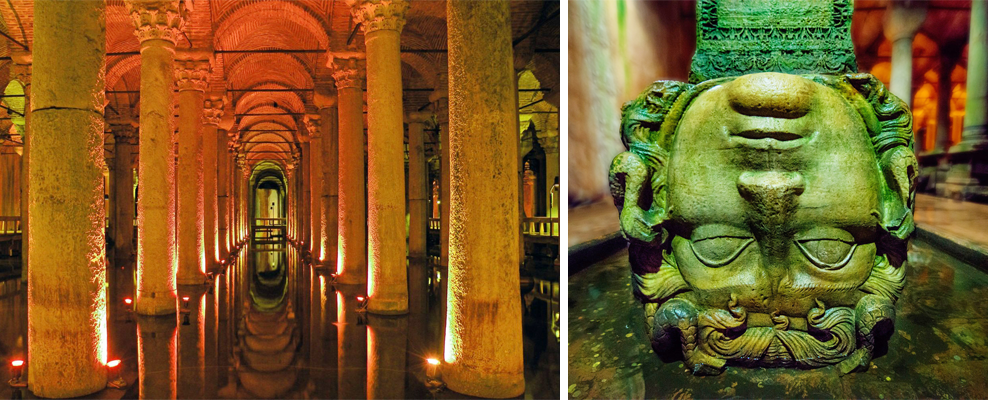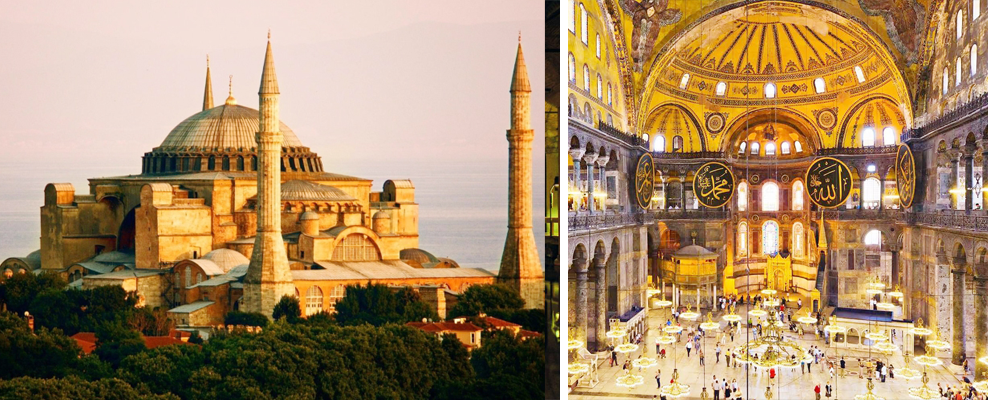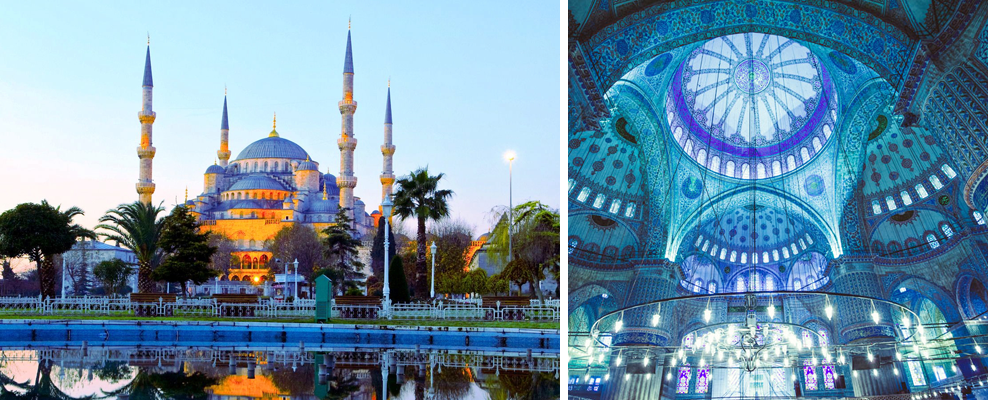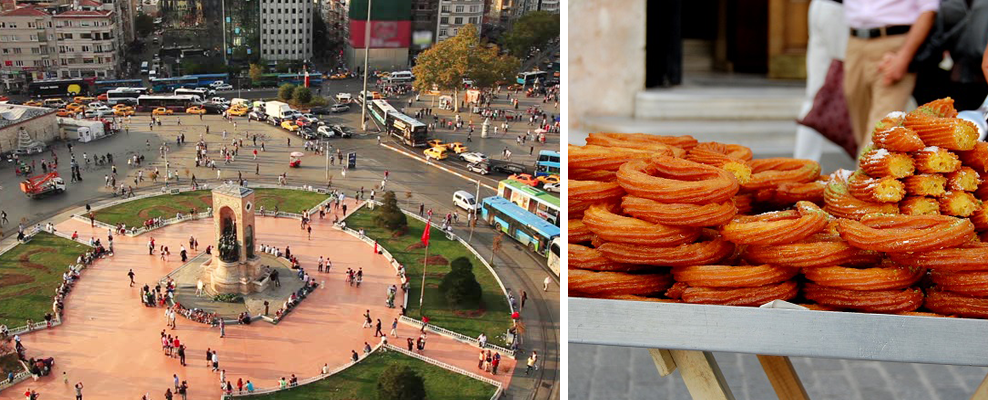The only city where ‘How do you do’, meets ‘Salam alaikum’; where muffins meets baklawa; where hookah meets malt; East meets West, where….you get the picture now, don’t you, where Asia meets Europe through the Bosphorous Strait of course. The meeting however, is more than merely a map. More than geography. With centuries of intertwined history in its veins, Istanbul today is a marvel in contrasts as a city. As old as it is new. As Asian in its sensibilities as European in its infrastructure and systems. And as colorful and vibrant as any melting pot can be. Istanbul, the capital of Turkey is the only metropolis in the world that is between two continents, Asia and Europe, thus giving it its unique charm.
So to draw a leaf from its dog-eared history pages, Istanbul or Constantinople served as the capital of the Roman, Byzantine and the Ottoman Empires and was re-christened Istanbul only in 1930. A quick trip to the old city and a glimpse of the grand city walls that surrounded Constantinople, gives you a much needed orientation into its history. Sprawling Theodosian Walls date back to nearly the 8th Century BC and were built in response to the threat from the Huns. Of course, what you see today will be a completely different picture. A floral one, for the walls now house unending rows of tulips, Turkey’s national flower, in a riot of colors.

As old cities go, there’s always something deeper than the surface and than what meets the eye. Literally. So beneath the city of Istanbul lies the Basilica Cistern or the Yerabatan Sarayi. Its recent claim to fame of course is that this is where the Bond flick; ‘From Russia with Love’ was shot. This great Byzantine cistern turns out to be a walk through rows of tall, endless marble columns, placed symmetrically creating corridors. Makes you pause and wonder as to how far-sighted the Byzantines were, for having used the cistern to store and supply water to the city during barbaric attacks. What’s worth a look too, is the ‘Medusa’ head at the far end of the cistern, lying upside down or placed horizontally.
You can’t come to Istanbul and not be moved by its glorious mosques and minarets that bear several hundred years of history and are architecturally marvelous.

The first one that we stop at is the Aya Sofya or the Hagia Sophiya, one of Istanbul’s most famous monuments. The exterior of the monument, at first glance looks a bit incoherent, with each minaret looking different from the other and the courtyard slightly crowded with tombstones. But a steep walk up the circular ramp leaves us spellbound. Built by Emperor Justinian the Hagia Sophiya was one of the greatest churches in Christendom, till the Turks converted it into a mosque. Today however, it enjoys the status of a museum. What is particularly worth understanding and appreciating is the enormous pillar less dome, soaring heavenwards. This Byzantine masterpiece was constructed as early as the 6th Century without any sophisticated tools or technology. One can also spot some ancient mosaics and frescoes, though most were plastered after it was converted into a mosque as the Islamic code forbids figural representation.

Just across Hagia Sophia is the stunning Blue Mosque or the Sultanahmet Mosque. It is said that Sultan Ahmet wanted to prove that he could build a monument as great as the Aya Sofya and therefore, the Blue mosque stands across it. Whilst Aya Sofya is a museum, the blue mosque is still a place of worship. By night, as you zip across the city roads, the Blue Mosque radiates in the moonlight, giving the city skyline a luminous, sublime touch.

Istanbul is one of those cities which inspires you to walk around and wander a bit. Find a little corner, do some street shopping, have street food and so on. So I decide to hop onto a tram (You take someone out of Calcutta, but you can’t take Calcutta out of her now, can you?) that takes me right at the top of Taksim square onto what looks like a really bust, vibrant and traffic less stretch. The Taksem Square is a typical city square. I wander around for a bit and then settle down with a packet of freshly roasted hazelnuts and a beer to watch the pigeons take flight. I spot charming women flower sellers and a shoeshine guy who dons a dapper uniform and displays his armory. Being Indian helps. They can tell you are from India and call out in a friendly tone, “Hindustan?” I nod and there’s a smile on both our faces.
The Turkish locals are a friendly, outgoing and energetic lot. A walk down Istiklal Street was one of my favorite dos in Istanbul as it brought out the present Turkish spirit to the fullest. The street was literally like a long mall with locals and tourists out to shop, sip coffee at a roadside café, play a game of backgammon or just amble along. The 3km long stretch houses tens of modern boutiques, theaters, cafes, bars, and pubs beautifully complimenting the classic architecture. The street smells of nostalgia and exudes a positive energy.

And then to top it all there’s the Grand Bazaar. So here’s a tip. If you are one of those who swear by New Market in Calcutta, wait till you get into the lanes of Grand Bazaar. You’ll simply love it. Browse, window shop, gaze, haggle, chit chat or even actually shop. It’s a destination in itself. The Bazaar is one of the largest covered markets in the world with more than 4,000 shops, stocking beautiful ceramic ware, jewelry, leather items, scarves, pottery, spices and much more. Don’t forget to sip on some freshly brewed Turkish coffee should the haggling and shopping wear you out. You’ll find, much after the coffee is over, the brew lingers on.
